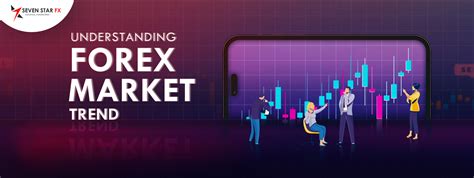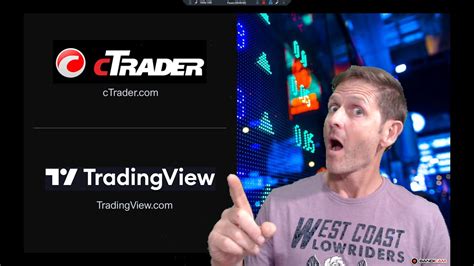The global foreign exchange market, often referred to as forex, is the largest and most liquid financial market in the world, offering endless opportunities for traders of all levels. Forex trading involves the buying and selling of currency pairs, such as EUR/USD or USD/JPY, and has become a popular avenue for those seeking financial growth or portfolio diversification. Whether you’re a beginner looking to grasp the basics or someone eager to refine your understanding, exploring how forex works and learning the essential steps to start trading can pave the way for success in this dynamic field.

Understanding the Forex Market
The forex market is the cornerstone of global finance, operating 24/5 to facilitate the exchange of currencies worldwide. It offers unparalleled opportunities to trade major currency pairs like EUR/USD or exotic pairs like USD/ZAR.
What is Forex?
Forex, or foreign exchange, is the marketplace where currencies are traded. Traders participate to profit from fluctuations in currency values, often driven by factors like interest rates, GDP growth, and geopolitical events. This global market supports international trade and investment, with participants ranging from retail traders to central banks.
Currency Pairs Explained
Understanding currency pairs is fundamental. Each pair consists of a base currency and a quote currency, such as GBP/USD, where GBP is the base and USD is the quote.
Major Pairs: EUR/USD, USD/JPY, GBP/USD – the most traded pairs with high liquidity.
Minor Pairs: EUR/GBP, AUD/NZD – less liquid but still popular among traders.
Exotic Pairs: USD/TRY, USD/ZAR – high volatility with unique opportunities.
Market Participants
The forex market consists of diverse players, each influencing the market in unique ways:
Retail Traders: Individual investors using platforms like MetaTrader 4 for personal trading.
Banks: Facilitating large-scale currency exchanges.
Hedge Funds: Employing strategies like carry trade to maximize returns.
Central Banks: Influencing currency values through monetary policies.
Forex Market Hours
Trading occurs across global sessions:
| Session | Time (GMT) | Key Currencies | Volatility |
|---|---|---|---|
| Tokyo | 00:00 - 09:00 | JPY, AUD | Moderate |
| London | 07:00 - 16:00 | GBP, EUR | High |
| New York | 12:00 - 21:00 | USD, CAD | High during overlap |
| Sydney | 22:00 - 07:00 | AUD, NZD | Lower, pre-Tokyo open |
These overlapping sessions, such as London-New York, create periods of intense trading activity.
Essential Forex Trading Strategies
The pathway to forex trading success begins with selecting the right strategies tailored to your trading style and goals. Here are critical approaches to consider.
Scalping and Day Trading
Focus on short-term trades lasting seconds or minutes (Scalping) or up to a day (Day Trading).
High frequency, small profit margins per trade.
Suitable for volatile pairs like EUR/USD and GBP/USD.
Requires disciplined use of technical indicators like Moving Averages and RSI.
Swing and Position Trading
This approach suits those who prefer holding trades longer, from several days to weeks. Swing traders often use Bollinger Bands or Fibonacci Retracement to identify entry and exit points. Position trading, by contrast, relies on fundamental analysis such as interest rate trends or central bank announcements.
Example:
Swing Trading: Profiting from short-term price corrections within a trend.
Position Trading: Capturing large market movements over extended periods.
Trend Following
Identify and follow prevailing market directions.
Tools: MACD for momentum and Average Directional Index (ADX) for trend strength.
Commonly applied to USD/JPY and AUD/USD pairs during clear trend conditions.
News Trading
Economic events can cause significant market shifts. News traders monitor events like inflation reports or employment data and anticipate market moves.
Key steps:
Watch for announcements impacting major currency pairs, like USD/CAD during Canadian GDP releases.
Use stop-loss orders to manage risks.
Trade with caution during high volatility periods.
Grid Trading
This automated technique places buy and sell orders at predefined intervals around a set price. Below is a comparison of grid strategies:
| Feature | Fixed Grid Strategy | Dynamic Grid Strategy |
|---|---|---|
| Setup | Predefined price levels | Adjusts based on market volatility |
| Best For | Stable, range-bound pairs (e.g., EUR/GBP) | Volatile pairs (e.g., USD/ZAR) |
| Risk Level | Lower risk | Higher risk, greater reward |
| Indicator Use | Minimal | Relies on Bollinger Bands, RSI |
| Automation | Fully automated | Partially automated |
By understanding and applying these strategies, traders can adapt to diverse market conditions and trading styles, enhancing their potential for consistent profits.
Technical and Fundamental Analysis Tools
Understanding how to analyze market trends is a cornerstone of successful trading. Both technical and fundamental analysis provide vital insights, enabling traders to make informed decisions and effectively trade currency pairs like EUR/USD or USD/JPY.
Introduction to Technical Analysis
Technical analysis focuses on interpreting price movements through chart patterns and historical data.
It identifies market trends, resistance, and support levels.
Common tools include candlestick patterns and volume analysis.
Using Moving Averages, RSI, and MACD for trade timing is pivotal.
Key Technical Indicators
Indicators simplify price movement interpretation and provide actionable insights:
Moving Average: Smoothens price data for trend clarity.
Relative Strength Index (RSI): Measures momentum and overbought/oversold conditions.
Fibonacci Retracement: Pinpoints support/resistance levels using mathematical ratios.
Example Use Cases of Technical Indicators
| Indicator | Purpose | Best Used For | Example Currency Pair |
|---|---|---|---|
| Moving Average | Trend analysis | Identifying market direction | EUR/USD |
| RSI | Momentum measurement | Spotting reversal opportunities | USD/JPY |
| Fibonacci Retracement | Support and resistance zones | Strategic entry/exit points | GBP/USD |
Fundamental Analysis Basics
Understanding macroeconomic factors is critical. Interest rates, GDP growth, and employment data heavily influence forex markets. For example:
Interest rate hikes typically strengthen a currency (e.g., USD).
Central bank decisions, like the Federal Reserve’s policies, create market volatility.
Political events, such as Brexit, can drastically shift the EUR/GBP pair.
Combining Technical and Fundamental Analysis
Blending these approaches optimizes decision-making:
Example: Use Bollinger Bands for trend analysis and pair it with employment data for confirmation.
A hybrid approach works particularly well for USD/CAD and AUD/USD.
Ichimoku Cloud and ADX
Advanced tools for deeper insights:
Ichimoku Cloud predicts trend momentum and strength.
ADX measures trend intensity, distinguishing strong vs. weak trends.
Interpreting Political Events
Elections, policy changes, and geopolitical conflicts influence market sentiment.
For instance, trade tensions impact the USD/TRY and USD/ZAR pairs.
Staying informed allows traders to anticipate shifts and adjust strategies accordingly.
By blending these analytical tools and perspectives, traders gain a comprehensive view of market behavior, supporting better trading decisions and risk management.
Key Points of Risk Management
Forex trading success relies heavily on effective risk management strategies. By mastering essential principles like stop-loss orders and position sizing, traders can safeguard their capital and navigate the volatility of pairs like EUR/USD and USD/JPY.
Setting Stop-Loss and Take-Profit Orders
These tools are essential for defining risk and profit levels in advance.
Examples:
Stop-Loss: Automatically exits a trade if USD/JPY drops below 132.50.
Take-Profit: Locks in gains when EUR/USD reaches 1.1050.
Benefits:
Protects traders from emotional decision-making.
Ensures consistent application of the risk-reward ratio.
Understanding Risk-Reward Ratios
The concept of balancing potential rewards against risks is central to disciplined trading.
| Ratio | Scenario | Example |
|---|---|---|
| 1:2 Risk-Reward | Risking $100 to potentially gain $200 | Position: EUR/USD short at 1.1000 |
| 1:1.5 Risk-Reward | Risking $100 to gain $150 | Position: USD/CHF long at 0.9200 |
| High Risk-Reward | Risking $50 to gain $500 (rare opportunities) | News Trading with USD/ZAR volatility |
Choosing appropriate ratios helps to align strategy with trading goals.
Practical Application:
Conservative traders might prefer a 1:2 ratio for steady growth.
Aggressive traders may experiment with higher ratios for volatile pairs like USD/TRY.
Position Sizing Techniques
Calculate position sizes based on account equity to avoid over-leverage.
Apply fixed percentage risk methods (e.g., risk 2% of total capital per trade).
Adjust sizes for high-risk scenarios, such as news trading or during volatile periods for AUD/USD.
Margin Level and Drawdown
Managing margin ensures that traders don’t over-leverage their positions:
Maintain a minimum margin level of 150% to avoid margin calls.
Drawdowns:
Track maximum account equity decline.
Use drawdown limits to halt trading after excessive losses.
By implementing these strategies, traders can manage risks effectively while trading dynamic pairs like GBP/USD and EUR/GBP. Mastery of these principles builds resilience in volatile markets.
Choose a Trading Platform
The right platform is essential for forex success, offering tools, charts, and integrations tailored to your trading needs. Here’s a breakdown of the most popular platforms and their unique features.
MetaTrader 4 vs. MetaTrader 5
MetaTrader 4 (MT4) and MetaTrader 5 (MT5) are industry favorites, known for their versatility and reliability.
MT4 Features:
Focuses on forex and CFD trading.
Offers advanced charting tools and automated trading via Expert Advisors (EAs).
Best for beginners due to its simplicity.
MT5 Features:
Includes additional trading assets like stocks and futures.
Features an integrated economic calendar for real-time analysis.
Offers more order types and timeframes for detailed strategies.
| Feature | MetaTrader 4 | MetaTrader 5 |
|---|---|---|
| Supported Assets | Forex, CFDs | Forex, Stocks, Futures |
| Economic Calendar | No | Yes |
| Timeframes | 9 | 21 |
| Market Depth | Limited | Advanced |
| Ideal For | Beginners | Advanced Traders |
This comparison helps traders choose based on their trading style and assets of interest, whether focusing solely on forex (like EUR/USD or USD/JPY) or diversifying further.

Exploring cTrader and TradingView
cTrader offers institutional-grade tools tailored for retail traders, while TradingView shines with its charting capabilities and social features.
cTrader:
Advanced risk management tools like Smart Stop-Out.
Multi-device compatibility with seamless performance.
Popular among those utilizing Scalping or Day Trading strategies.
TradingView:
Industry-leading charting tools and a vibrant social community.
Ideal for Swing Trading and Trend Following due to its extensive technical indicators like RSI and Bollinger Bands.
Mobile Trading Apps
Trading on the go is crucial for today’s dynamic markets. Mobile apps offer flexibility and access to real-time data.
Access platforms like MT4, MT5, and TradingView directly from smartphones.
Stay updated on economic events such as central bank announcements and inflation data.
Customize notifications for currency pairs like GBP/USD or USD/ZAR to capitalize on market opportunities.
Platform Tools and Add-Ons
Enhance efficiency by leveraging tools and plugins available for popular platforms:
Automated Trading: Use bots to execute strategies like Grid Trading or Trend Following.
Custom Indicators: Tailor tools like Ichimoku Cloud or Fibonacci Retracement for in-depth analysis.
Economic News Integration: Direct feeds to track events influencing USD/TRY or EUR/GBP.
These add-ons optimize decision-making, helping traders align with their unique goals and trading methods.
Conclusion
Entering the world of forex trading requires a strong grasp of the basics, a clear understanding of market dynamics, and the right tools to make informed decisions. From learning about currency pairs like EUR/USD and GBP/USD to exploring trading strategies such as scalping and trend following, every step builds on the foundation of knowledge necessary for success. Utilizing technical indicators like Moving Averages or understanding fundamental factors like interest rates can help traders create effective plans. Coupled with robust risk management practices and the use of reliable trading platforms such as MetaTrader 4 or TradingView, beginners can confidently take their first steps in forex trading. Remember, the journey in forex is ongoing, with every trade offering lessons to refine your approach and strategy further.













